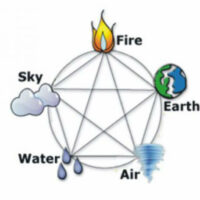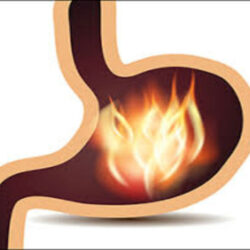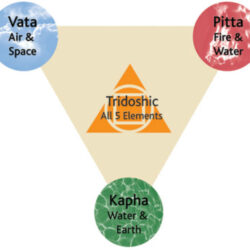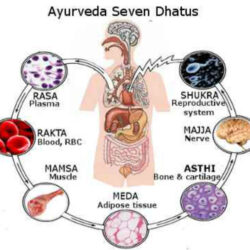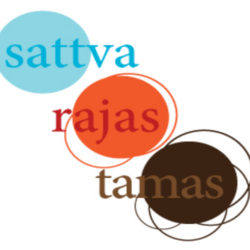
Ayurveda is the oldest surviving complete medical system in the world.
Derived from its Ancient Sanskrit roots-
आयुष्य: वेद: आयुवेद: ||
आयुष्य: (ayush) means Life
वेद : (Ved) means Science / Knowledge
Ayurveda is the science of life.
Its origin goes back nearly 5000 years.
The history of Ayurveda starts from the time of the Holy books — ‘The Vedas’.
Ancient mythology contents that the concept and essence of Ayurveda was revealed by the creator of World himself – Lord Brahma.
There are Four Vedas-
i) Rigved
ii) Yajurved
iii) Samved
iv) Atharvved
Vedas preach the philosophy of life. The Atharvved contains the principles of healing on which Ayurveda is based.
Ayurveda has influenced many of the older traditional methods of healing including Tibetan, Chinese and Greek medicines.
Hence, Ayurveda is considered by many as the ‘Mother of Healing’.
The text of Ayurveda is divided into TWO major categories namely-
- Brihat Trayi
- Charak Samhita
- Sushrut Samhita
- Ashtanga Hridayam
- Laghu Trayi
- Sharangdhar Samhita
- Bhavprakash
- Madhavnidan
These texts described the basic principles & theories in which Ayurveda has evolved.
They also include vast clinical information on many diseases and their management.
Ayurveda therefore is not simply a health care system, but a form of lifestyle adopted to maintain perfect balance and harmony within human existence, from the most abstract transcendental values to the most concrete physiological expressions. Based on the premise that life represents an intelligent co-ordination of the Atma (Soul), Man (mind), Indriy (Senses) and Sharir (Body).
That revolves around the Five dens element that goes into the making of the constitution of each individual, called Prakriti.
Which in turn to determined by the three physical energies – Vat, Pitta, Kaph
And the three mind energies – Satwa, Rajas, and Tamas.
Ayurveda thus offers a unique blend of science and philosophy that balances the physical, mental, emotional and spiritual components necessary for holistic health.
PRINCIPLES OF AYURVEDA
INTRODUCTION –
According to Ayurvedic philosophy an individual bundle of ‘Spirit’, desirous of expressing itself, uses subjective consciousness or Satwa to manifest sense organs and a mind. Spirit and mind then project themselves into a physical body, created from Five (Panch) Great (Maha) Eternal Elements (Bhutas) Together called Panchamahabhutas Which arise from Tamas. The sense organs then use Rajas to project from the body into the external world to experience their objects. Body becomes the Mind’s vehicle its physical instrument for sense gratification.
The Bhutas are combined into ‘Tridoshas’ or bioenergetics forces that govern and determine our health or physical condition. While the Three Gunas (Rajas or activity, Tamas or inertia, And Satwa, which balances the first two) or psychic forces determine our mental and spiritual health. Ayurveda is thus a holistic system of healthcare that teaches us to balance these energies in order to achieve optimum health and well-being.
SWASTH / HEALTHY
Ayurveda clearly states that only a balanced condition of doshas, dhatus, and malas is Aarogya (Good health or Disease free condition) and their imbalance is the cause of ill health or disease.
समदोषा: समाग्नी: च समधातुमलक्रीय: |
प्रसन्न आत्म इंद्रियमना: स्वस्थ इति अभिधीयते ||
Balanced Doshas (Humors), healthy Agni, a good state of tissues and their metabolic end products lead to a balanced state of the senses, mind and spirit, all of which lead to health.
